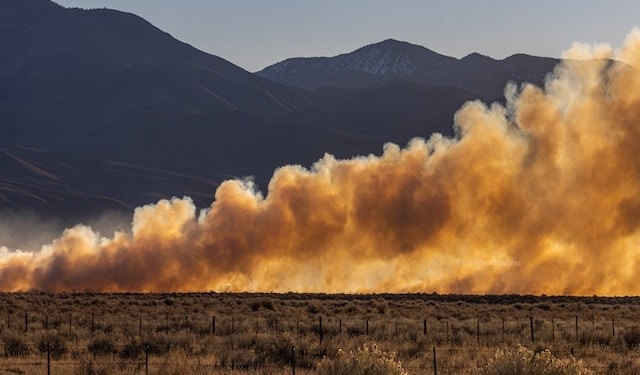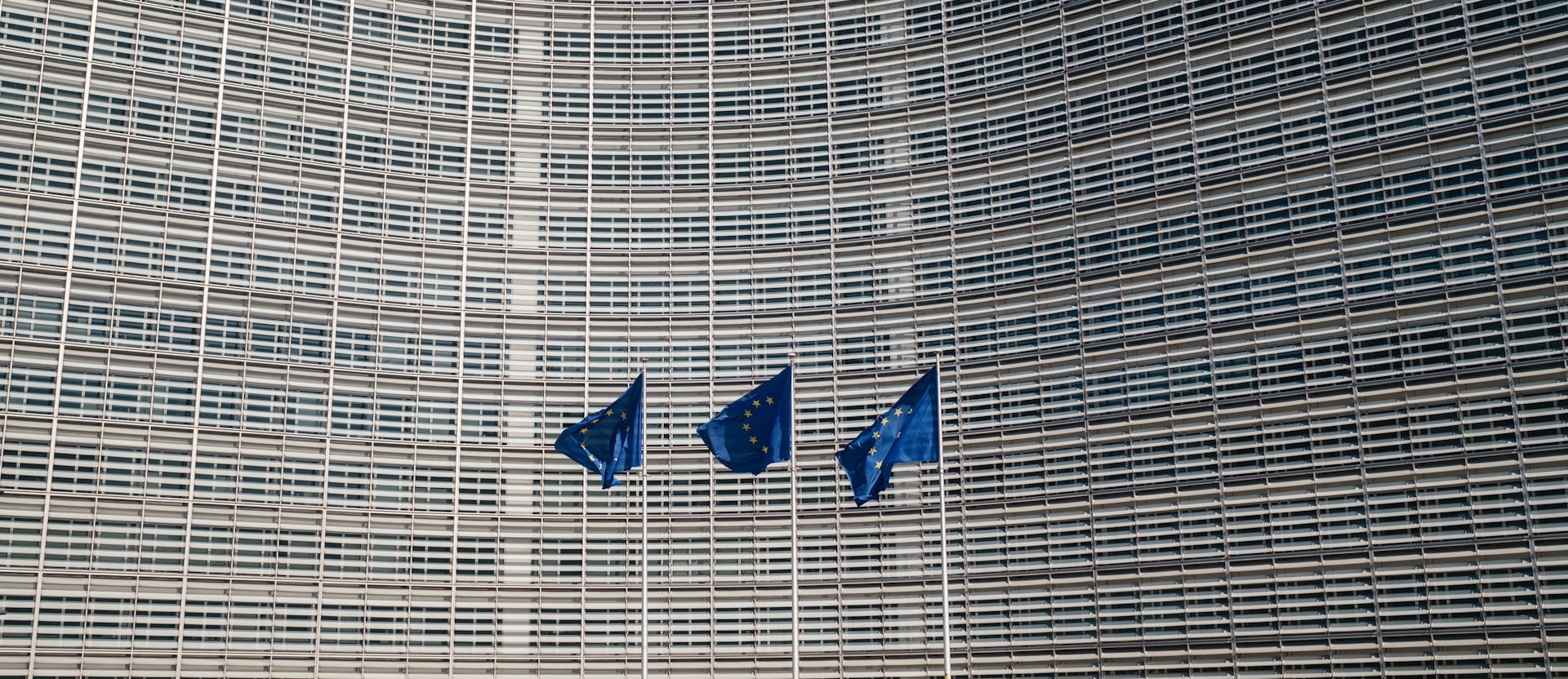4 PM CET – California wildfires are even more dangerous due to climate change, study shows
A new analysis published in the Proceedings of the National Academy of Sciences reveals that the extent of area burned in California’s summer wildfires has increased significantly due to climate change over the past half-century.
Between 1996 and 2021, the area burned in summer fires in California increased about fivefold compared to the period between 1971 and 1995. The research shows that higher temperatures and drier conditions, driven by climate change, are making wildfires more likely.
McKinney Fire Becomes California’s Largest of 2022, Burning 51,000 Acres #California #wildfires #McKinneyFire https://t.co/i3yA9Vn75H
— Michael Lemons (@lemondrop110) July 31, 2022
The study found that the burned area grew 172% more than it would have without climate change, with human-made effects becoming increasingly dominant after 2001. “Our results indicate that nearly all the observed increase in burned area is due to anthropogenic climate change,” the study says.
The analysis emphasizes the role of temperature as the primary factor influencing the shift, with higher average daily peak temperatures leading to more extensive wildfires.
3 PM CET – Economic cost of biological invasions of the EU
A study published in the journal Environmental Sciences Europe has revealed the substantial economic costs resulting from biological invasions in the European Union (EU). Biological invasions, caused by the introduction of invasive alien species from outside their natural range, pose a significant threat to ecosystems, biodiversity, and human well-being.
The study highlights the high economic costs of these invasions, which are often underestimated. Out of approximately 13,000 invasive alien species in the EU, only around 1% have reported costs, indicating significant gaps in cost assessments. The research team projected that unreported costs could be 501% higher than currently recorded, reaching €26.64 billion (US$28.0 billion).
The study emphasizes the urgent need for improved cost reporting, coordinated international action, and stronger prevention strategies to address the ecological and economic impacts of invasive alien species.
1 PM CET – “Time to conclude the EU-Mercosul agreement,” says von der Leyen
European Union (EU) Commission President Ursula von der Leyen has pledged to conclude the long-delayed trade agreement between the EU and the Mercosur bloc by the end of the year. The deal, which has been in the making for over two decades, involves Brazil, Argentina, Uruguay, and Paraguay.
The EU is already the top investor in Latin America.
We can do much more by concluding EU-MERCOSUL.
On top, Global Gateway, our investment plan for the world, will invest €10 billion in LatAm & Caribbean ↓ https://t.co/dYEOsqhE4V
— Ursula von der Leyen (@vonderleyen) June 12, 2023
The EU has presented an additional sustainability document to address concerns over deforestation in the Amazon, but countries like France and Austria remain opposed due to climate and agricultural worries. The Commission is awaiting a response from the Mercosur bloc regarding the addendum.
Von der Leyen’s trip to Latin America, which began on Monday, June 12, aims to strengthen relations amidst growing geopolitical rivalry with China and the Ukraine conflict. Negotiators from both sides are set to meet later this month.
1 PM CET – Longer driving ranges, lower costs: Toyota to introduce new EV batteries
Toyota has announced its plans to introduce high-performance solid-state batteries and other technologies to enhance the driving range and reduce the costs of its future electric vehicles (EVs). The automaker aims to launch next-generation lithium-ion batteries by 2026, offering longer ranges and faster charging.
Toyota’s Newly Revealed EV Plans Include 900-Mile Batteries https://t.co/9YfC9K5rFg pic.twitter.com/IDnQyaymry
— Flyin18T Motorsports (@Flyin18T) June 13, 2023
Additionally, Toyota has made progress in addressing durability issues in solid-state batteries and is working towards mass production with a target of commercialization between 2027 and 2028. The company also revealed plans to develop an EV with a lithium-ion battery offering a range of 1,000 km and an EV powered by a solid-state battery with a range of 1,200 km and a charging time of just 10 minutes.
12 PM CET – JPMorgan introduces a quantifiable ESG measuring tool for investments
JPMorgan Chase & Co’s Securities Services division is introducing a sustainable investment data solutions initiative aimed at facilitating environmental, social, and corporate governance (ESG) investments for institutional investors.
The limited availability of comprehensive ESG data has been a challenge for the industry, hindering investment decisions. Gerard Francis, head of data solutions at JPMorgan, explained that utilising ESG data can often take months, but the new standardised solution enables the same information to be accessed within hours.
The initiative is designed to be cost-effective and user-friendly for investors. The global push to address climate change and pressing issues like workplace diversity and social justice has resulted in over $30 trillion in capital being committed to ESG investments.
11 AM CET – Giants of iron and steel industry partner up to decarbonise their value chain
Rio Tinto, the world’s largest iron ore producer, and China Baowu, the world’s largest steelmaker, have announced a partnership aimed at decarbonising the steel value chain.
The demand for low-carbon steel is expected to rise as manufacturers globally strive to decarbonise their supply chains. Steelmaking is a major contributor to global CO2 emissions, making it a challenging sector to address in terms of reducing greenhouse gas emissions.
We have signed a Memorandum of Understanding (MoU) with China Baowu, the world’s biggest steelmaker, to explore a range of industry leading new projects in China and Australia to help decarbonise the steel value chain.
— Rio Tinto (@RioTinto) June 12, 2023
The partnership between Rio Tinto and China Baowu will focus on projects in China and Australia, including the development of low-carbon solutions for low-to-medium grade iron ores, optimisation of pelletisation technology, and the exploration of low-carbon iron production opportunities in Western Australia.
10 AM CET – ‘Fish Kill’: Thousands of fish die as a result of low levels of oxygen in water
Tens of thousands of dead fish were found on the Texas Gulf Coast due to low oxygen levels, with ensuing warnings from local officials to stay away from the beaches. This occurred in Brazoria County, with waves from the Gulf of Mexico bringing in countless dead fish.
Tens of thousands of dead fish have washed up along the Gulf Coast in Brazoria County, Texas, likely due to hypoxia — and here’s how the climate crisis is contributing to the issue pic.twitter.com/w92mLSGEGj
— NowThis Impact (@nowthisimpact) June 12, 2023
Texas Parks and Wildlife Department officials explained that the low dissolved oxygen levels in the water made it difficult for the fish to breathe, an occurrence known as the “fish kill.” While this incident hasn’t been directly linked to climate change, researchers suggest that such fish kills may become more frequent as temperatures rise while oxygen levels fall in bodies of water across the US and Europe.
— —
Read our Sustainability Tracker for June 12, 2023:
Editor’s Note: The opinions expressed here by the authors are their own, not those of Impakter.com — In the Featured Photo: Smoke and flames from the Airport in the the Owens Valley Featured Photo Credit: Ross Stone













